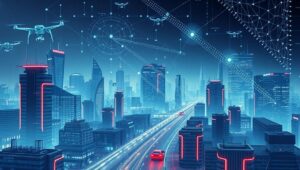From Data to Insights: AI and Machine Learning on IoT Data (2025)
The Internet of Things (IoT) has revolutionized how we interact with technology, creating a vast network of interconnected devices that generate massive amounts of data. This data holds immense potential for driving insights, improving efficiency, and enabling new services. However, unlocking this potential requires sophisticated tools and techniques, particularly those offered by Artificial Intelligence (AI) and Machine Learning (ML).
The Proliferation of IoT Data
By 2025, the number of IoT devices is projected to reach tens of billions, encompassing everything from smart home appliances to industrial sensors. These devices continuously collect and transmit data on various parameters such as temperature, pressure, location, and usage patterns. The sheer volume of this data makes it impossible for humans to analyze manually. This is where AI and ML come into play.
AI and ML: Key Enablers for IoT Data Analysis
AI and ML provide the capabilities needed to process, analyze, and derive meaningful insights from IoT data. Here are some key applications:
- Predictive Maintenance: ML algorithms can analyze sensor data from industrial equipment to predict potential failures before they occur. This enables proactive maintenance, reducing downtime and saving costs.
- Smart Homes and Automation: AI algorithms can learn user preferences and automate tasks in smart homes, such as adjusting thermostats, turning on lights, and controlling appliances. This enhances comfort and energy efficiency.
- Healthcare Monitoring: IoT devices can monitor patients’ vital signs and activity levels, while AI algorithms can analyze this data to detect anomalies and provide personalized recommendations. This improves patient outcomes and reduces healthcare costs.
- Supply Chain Optimization: IoT sensors can track goods throughout the supply chain, while AI algorithms can analyze this data to optimize logistics, reduce waste, and improve delivery times.
- Smart Cities: IoT devices can collect data on traffic patterns, air quality, and energy consumption, while AI algorithms can analyze this data to optimize city services, reduce pollution, and improve the quality of life for residents.
Challenges and Considerations
While the potential of AI and ML in IoT is vast, there are also several challenges and considerations to keep in mind:
- Data Security and Privacy: IoT devices can collect sensitive data, making security and privacy paramount. Robust security measures and data anonymization techniques are essential to protect user data.
- Scalability: Processing and analyzing massive amounts of IoT data requires scalable infrastructure and algorithms. Cloud-based platforms and distributed computing frameworks are often used to address this challenge.
- Data Quality: The accuracy and reliability of AI and ML models depend on the quality of the data they are trained on. Data cleaning and preprocessing are crucial steps in the AI/ML pipeline.
- Edge Computing: Processing data at the edge of the network, closer to the IoT devices, can reduce latency and bandwidth requirements. Edge computing is becoming increasingly important for real-time applications.
- Ethical Considerations: As AI becomes more prevalent, it is important to consider the ethical implications of its use. Bias in algorithms, transparency, and accountability are important considerations.
The Future of AI and ML in IoT
As AI and ML technologies continue to evolve, their role in IoT will only become more significant. We can expect to see more sophisticated algorithms, improved data security, and increased adoption of edge computing. The combination of AI, ML, and IoT will drive innovation across a wide range of industries, creating new opportunities and improving our lives.
In conclusion, AI and Machine Learning are critical for unlocking the full potential of IoT data. By leveraging these technologies, organizations can gain valuable insights, improve efficiency, and create new services. As the number of IoT devices continues to grow, the importance of AI and ML in IoT will only increase.




